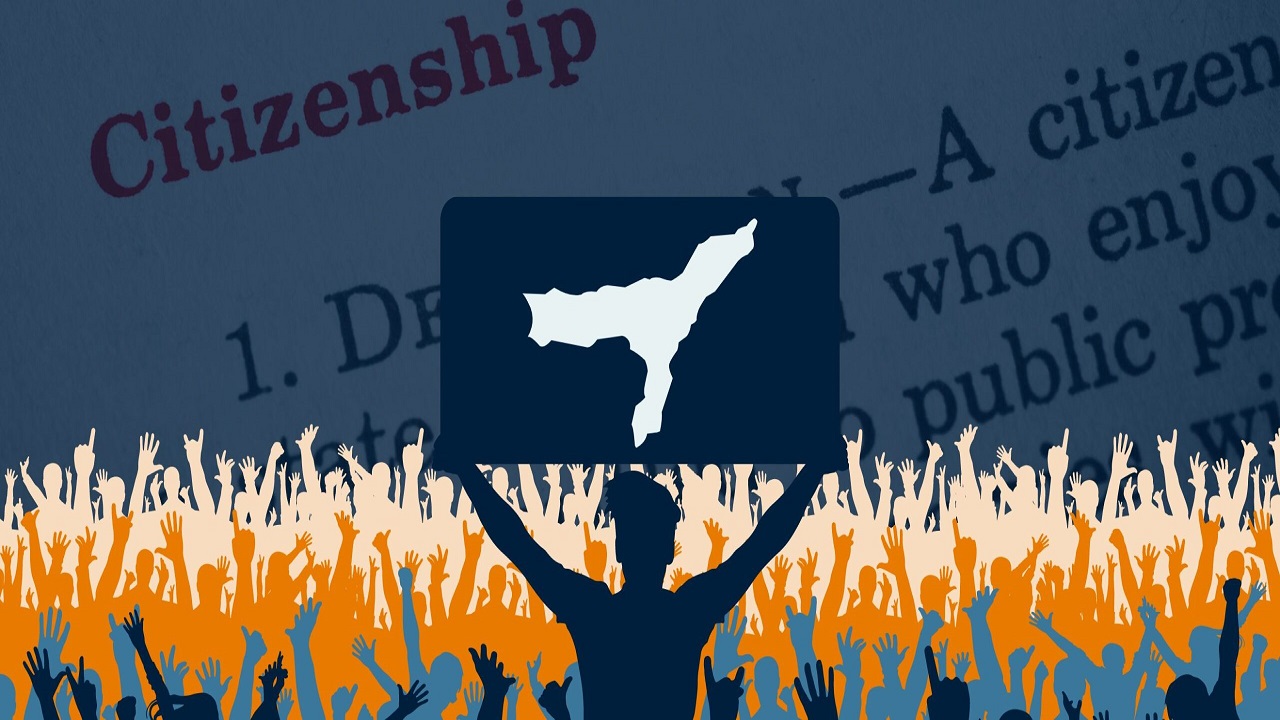Assam Eviction Drive : A Battle for Land, Identity, and Order
Context
The Assam government’s eviction campaign targeting encroachers on forestlands, wetlands, and religious lands has had regional implications, especially for the northeastern states bordering Assam. These states have taken preventive measures to avoid the influx of evicted individuals, raising broader issues of illegal migration, land encroachment, and inter-state tensions.
Introduction
Assam has historically dealt with demographic pressures, particularly those stemming from migration across its porous international border with Bangladesh. The Assam Accord of 1985 and subsequent legal measures laid the foundation for actions against illegal settlers. The current eviction drive is a continuation of this long-standing policy to protect indigenous identity, land rights, and environmental integrity, but it has also raised humanitarian and geopolitical concerns in the region.
Physio-Geography of Assam
-
Located in the northeast of India and is the most populous state in the region
-
National borders: Arunachal Pradesh (North), Nagaland and Manipur (East), West Bengal (West), Tripura, Meghalaya, and Mizoram (South)
-
International borders: Bhutan (North), Bangladesh (South)
-
Physiographic regions: Northern Himalayas (Eastern Hills), Brahmaputra Plains, and Deccan Plateau (Karbi Anglong)
-
Climate: Tropical monsoon rainforest climate with high humidity and heavy rainfall
-
Major rivers: Brahmaputra and its tributaries
-
National Parks: Kaziranga, Manas, Dibru-Saikhowa, Nameri, Dehing Patkai, Raimona, Orang
-
Indigenous communities: Bodos, Mishings, Karbis, Rabhas
Reasons for the Evictions
-
The drive primarily targets illegal encroachers, particularly those alleged to be Bangladeshi-origin Muslims often referred to as 'Miya'
-
Assam Accord (1985) provided a cut-off date of 24 March 1971 for detecting and deporting illegal immigrants
-
Religious encroachments: Over 15,288.52 bighas of satra (Vaishnav monastery) lands are illegally occupied across 29 districts
-
Forestland encroachments: As of March 2024, 3,620.9 sq. km of forest area was reported encroached (as per Environment Ministry)
-
Wetland encroachments: In 2022, houses of 130 families were demolished at Silsako Beel, a wetland in Guwahati
Eviction Process
-
Based on the political promise of protecting jaati (race), maati (land), and bheti (home) (since 2016)
-
Gauhati High Court ordered reclamation of encroached forestlands
-
First eviction drive began in 2016 near Kaziranga National Park
-
Between 2016 and July 2025, 1,080 families were evicted from 135 hectares in Goalpara district
-
Government has committed to make Assam encroachment-free by 2035
-
Recent evictions in June 2025 have allegedly targeted Bengali Muslims, but non-Muslims were also affected
-
Tribal communities residing before 2005 (under Forest Rights Act) are exempted
-
At least 12 Ahom families were provided fast-track resettlement after eviction from grazing reserves in Lakhimpur district
Challenges for Neighbouring States
-
Nagaland reported that 200 vehicles carrying suspected illegal migrants were intercepted before eviction began in Assam
-
Fears in Nagaland, Mizoram, Arunachal Pradesh, and Meghalaya over cultural dilution due to incoming Bengali-speaking migrants
-
Several of these states are protected under the Inner Line Permit (ILP) system, which restricts entry of outsiders
-
Encroachment disputes are central to boundary conflicts with Arunachal Pradesh, Meghalaya, Mizoram, and Nagaland
-
These four states have allegedly occupied 83,000 hectares of Assam’s land since they were carved out between 1963 and 1972
-
Gauhati High Court directed all five states to set up a high-level committee to address encroachments and facilitate coordinated action
Conclusion
A collaborative and legally sound approach is essential for resolving eviction-related tensions and interstate disputes. Maintaining transparency, ensuring rehabilitation, and respecting indigenous rights can help in preserving both social harmony and ecological balance. Effective coordination between northeastern states will be key in addressing the complex demographic and territorial issues linked to illegal settlements.




Comments (0)